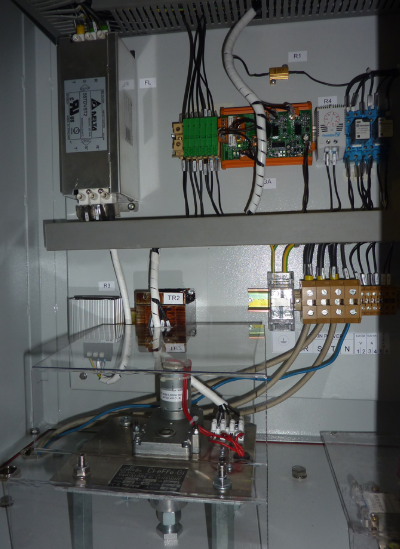CATHODIC PROTECTION POWER SOURCES
Cathodic Protection Transformer rectifier stations
Generally there are different types of transformer rectifiers.
Oil cooled transformer/rectifiers
Air-cooled transformer/rectifiers
Switching mode transformer/rectifiers
- Transformer rectifiers and control and monitoring equipment shall be installed at locations as directed by the design document. Prior to the installation the area classification shall be checked and the unit shall meet this DEP.
- The installation checklist for transformer rectifiers stations ( CATHDIC PROTECTION SYSTEM COMMISSIONING ) should be used.
- Floor-mounted units shall be installed on a stable base. When installed outdoors, a concrete plinth shall be constructed with separate cable ducts for AC and DC cables. The equipment shall be fastened to the plinth or the floor using suitable fastenings. Wall mounted units shall be sufficiently supported and bolted to the wall. All units shall be installed so that sufficient ventilation is provided.
- Sufficient room shall be provided around the units to allow full opening of all doors and panels and to provide access for reading meters and to carry out visual inspection, adjustments and repairs.
- When installed outdoors, sufficient security shall be provided by using lockable cabinets and main circuit breakers. The enclosure shall be weather proofed to a degree of protection of at least IP 54 in accordance with IEC 529. When installed off-plot, security fencing may have to be erected all around the unit. If applicable a sunshade shall be erected above the transformer rectifier.
- Oil cooled units shall be filled with the supplied transformer oil to the indicated level, leaving sufficient room for expansion after energising the unit. When a unit is supplied oil-filled, the level shall be checked and adjusted when necessary. Oil temperature gauges shall be installed or checked. Silica gel breathers shall be installed. The content of the breathers shall be dry as indicated by the (blue) colour of the crystals. Pink or white crystals indicate moisture contaminated silica gel, which shall be dried or replaced.
- Transformer rectifiers shall be connected to the power supply in accordance with DEP 33.64.10.10-Gen.
- All functional testing of the transformer/rectifier unit shall be done with the secondary (DC) cables disconnected from the structure to be protected. Dummy load resistors or circuits shall be used for such testing.
- Upon completion of the installation, the unit shall be left de-energised. The main circuit breaker shall be locked open and/or the primary or secondary fuses shall be removed and stored separately from the unit until final commissioning.
Cathodic Protection Solar Generator Stations
- The solar generator system shall be supplied complete with supporting framework.
- The location of the solar generator station shall be checked for any obstructions to insolation of the solar panels such as other buildings, trees, etc.
- A suitable foundation shall be constructed, able to support the solar generator, batteries and regulators according to the generator Manufacturer’s written recommendations.
- The foundation shall be suitable to withstand the effect of the maximum prevailing wind forces on the solar panel structure.
- The structure shall be oriented so that solar panels, when installed, face the direction of maximum insulation.
- Sufficient room shall be provided around the solar panels to provide access for maintenance and cleaning of the panels and control equipment.
- Battery containers or supports shall be constructed so that spillage of the full content of one battery unit can be contained in an acid resistant container.
- Sufficient security shall be provided by using lockable cabinets or buildings and/or by constructing a security fence around the solar generator station.
- All functional testing of the solar generator unit shall be done with the secondary cables disconnected from the structure to be protected. Dummy load resistors or circuits shall be used for such testing and may be left in place until final commissioning is required.
- Upon completion of the installation, the unit may be left energised to keep the batteries charged. The secondary fuses shall be removed and stored separately from the unit until final commissioning.
